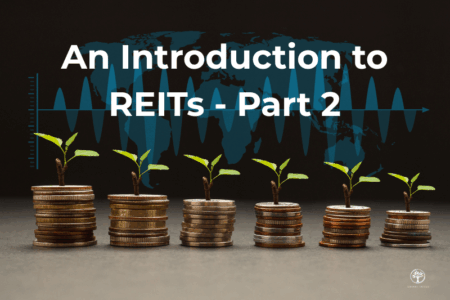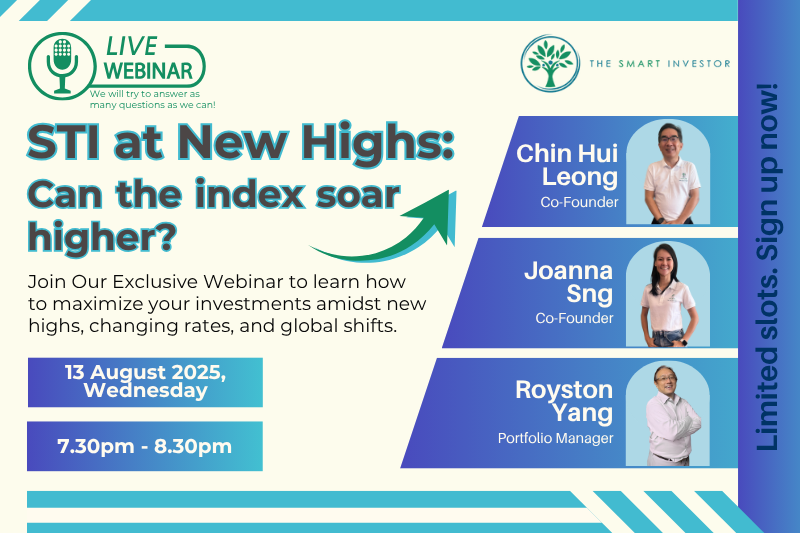An interesting article caught my attention over the weekend.
The passage spoke about bungalow owners, one of the richest groups of Singaporeans.
As you know, a landed property in our city state can easily run into the tens of millions.
But their assets were not the focus.
The most surprising thing was how the owners had little cash to sustain their living expenses.
One example is a mother-and-daughter pair that had to rely on their social group to pay for their meals.
All was well until the group discovered that the pair were living in a bungalow, making them technically richer than everyone else within the group.
Another example is that of a bungalow owner who does not have sufficient cash to pay his property taxes of S$36,000 a year unless he sells the very property that is incurring such high taxes!
Trapped without recourse
These examples may sound like extremes, but they are very real. They also serve to highlight the poor financial positions you can fall into.
The asset-rich, cash-poor scenario is how these folk ended up in such a predicament.
Having a multi-million-dollar condominium might give you bragging rights, but when the owner needs to rely on others’ charity to afford basic meals, it smacks of poor money management.
Such people end up being “trapped” because they refuse to sell their home.
The solution to their “problems” seems simple, doesn’t it?
Sell the bungalow and then use the cash to downgrade to a cheaper property such as a condominium.
This action will bring in a ton of cash that can be utilised not just for daily expenses, but also in case of a medical emergency or other exigencies.
But life is rarely that straightforward. A mortgage might not be fully paid up. Properties also tend to take some time to sell and convert to cash.
Cash flow from your portfolio
The same thing can happen to your investment portfolio if you choose to deploy the bulk of your cash into growth stocks.
The steady growth of your investment portfolio means that you will end up with a good sum for your retirement portfolio.
However, most if not all growth stocks such as Meta Platforms (NASDAQ: META) and Adobe (NASDAQ: ADBE) do not pay out a dividend.
Most such businesses also have no foreseeable runway to pay out a dividend, unlike companies such as Apple (NASDAQ: AAPL) which started paying dividends as it accumulated excess cash.
The result?
You may end up with an attractive portfolio that you cannot easily monetise unless you sell off part of a position or several positions.
The difference here is that you can sell your stocks and liquidate almost immediately.
Retirement planning
Many investors may fail to account for the lack of cash flow in their golden years as they hang up their working hats.
Being gainfully employed and seeing your corporate career doing fine, there’s the feeling of invincibility as the cash continues to pour in from your job.
But as we age and approach the statutory retirement age of 65, this income may slowly dry up as we ease up on our work commitments and take things slower.
By building a portfolio that also includes dividend-paying stocks, we can avoid the situation that the bungalow owners found themselves stuck in.
These income stocks can continue to dish out a healthy flow of passive income even after you stop working.
This valuable stream of income can pay for your daily expenses and if it is large enough, even sustain your previous lifestyle.
And you won’t need to sell a single piece of your investment portfolio for cash if you have sufficient dividends flowing in to take care of your daily needs.
Whether it’s REITs such as Mapletree Logistics Trust (SGX: ME8U) or dependable blue-chip names such as DBS Group (SGX: D05), every investment portfolio deserves some income component within it.
Best of both worlds: Asset rich and cash-rich
By filling up your portfolio with a good mix of growth and income stocks, you can enjoy the best of both worlds.
The “growth” component will ensure your portfolio value increases steadily over time, giving you a valuable asset you can rely on for your golden years.
And the dividend component of the portfolio can continue to churn out cash flows that you can use for a variety of daily expenses.
It’s possible to benefit from the best of both worlds, but only if you start taking action and invest your money now.
By parking your money in a good mix of stocks as early as possible, you can harness the power of compounding to ensure you build a strong portfolio of growth and dividend stocks that can last you a lifetime.
If you’re looking to invest in 2023, our latest FREE report can guide you. It shows you how to find dividend stocks in SGX, and a nearly fool-proof way of building your portfolio. Many people love dividend investing, but few truly know how to profit from it consistently. Click the link here to download our new report and discover the secrets!
Follow us on Facebook and Telegram for the latest investing news and analyses!
Disclosure: Royston Yang owns shares of DBS Group, Apple, Meta Platforms, and Adobe.




